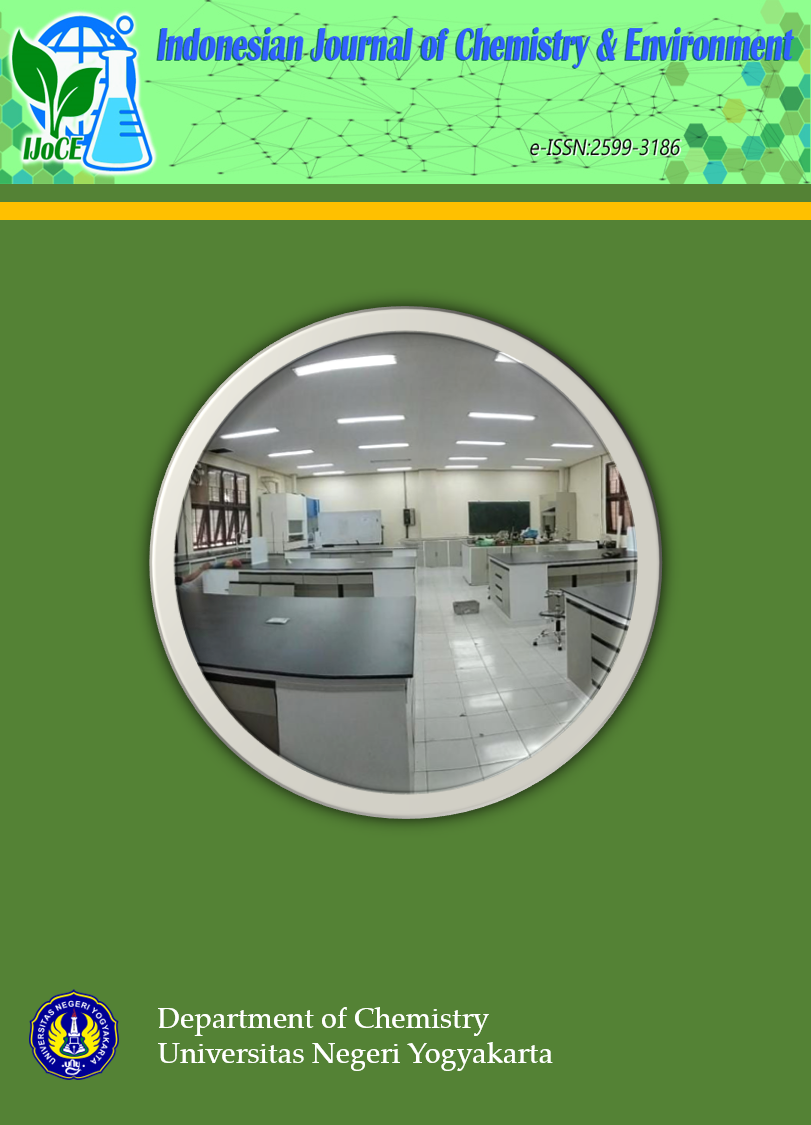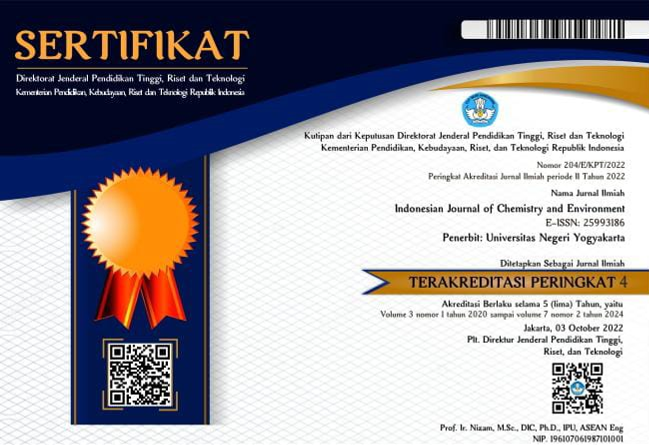Determination of Iron (Fe) Species in Samples of Canned Packaging Beef
DOI:
https://doi.org/10.21831/ijce.v1i1.20785Abstract
References
Forrest, J.C., Aberle E.D., Hedrick H.B., Judge M.D., & Merkel R.A. (1992). Principles of Meat Science. San Fransisco: W.H. Freeman and Company.
Harvey, D. (2000). Modern Analytical Chemistry. USA: The McGraw-Hill Companies.
Barone, C., Bolzoni, L., Caruso, G., Parisi, S., Steinka, I. (2015). Food Packaging Hygiene. http://www.springer.com/978-3--319-14826-7
Korvali, S. I. & Hamdan, W.A. (2013).Essential and Toxic Metals in Lebanese Marketed Canned Food: Impact of Metal Cans. Journal of Food Research Vol. 2 No. 1, 19-30.
Mahalakshmi, M., Balakrishman, S., Indira, K., & Srinivasan, M. (2012). Characteristic Levels of Heavy Metals in Canned Tuna Fish. Journal of Toxicology and Environmental Health Sciences Vol. 4(2), 43-45
Mahurpawar, M. (2015). Effects of Heavy Metals on Human Health. International Journal of Research-Granthaalayah, 1-7.
Downloads
Published
How to Cite
Issue
Section
Citation Check
License
Authors who publish with this journal agree to the following terms:
- Authors retain copyright under a Creative Commons Attribution–ShareAlike License (CC BY SA) that allows others to share: copy, and redistribute the material in any medium or format, Adapt: remix, transform, and build upon the material, for any purpose, even commercially.
- Authors are able to enter into separate, additional contractual arrangements for the non-exclusive distribution of the journal's published version of the work (e.g., post it to an institutional repository or publish it in a book), with an acknowledgement of its initial publication in this journal.
- Authors are permitted and encouraged to post their work online (e.g., in institutional repositories or on their website) prior to and during the submission process, as it can lead to productive exchanges, as well as earlier and greater citation of published work.










